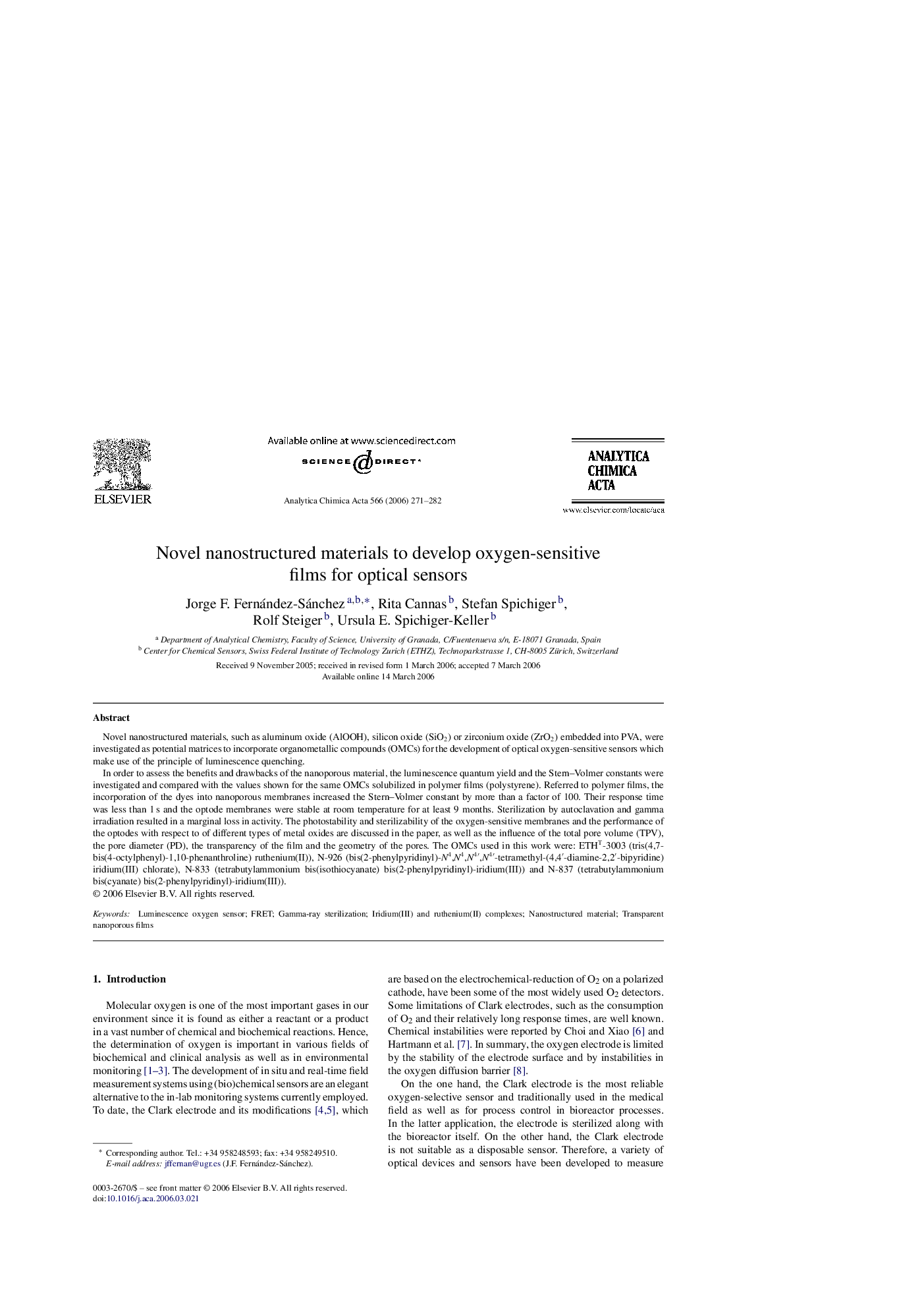| Article ID | Journal | Published Year | Pages | File Type |
|---|---|---|---|---|
| 1171880 | Analytica Chimica Acta | 2006 | 12 Pages |
Novel nanostructured materials, such as aluminum oxide (AlOOH), silicon oxide (SiO2) or zirconium oxide (ZrO2) embedded into PVA, were investigated as potential matrices to incorporate organometallic compounds (OMCs) for the development of optical oxygen-sensitive sensors which make use of the principle of luminescence quenching.In order to assess the benefits and drawbacks of the nanoporous material, the luminescence quantum yield and the Stern–Volmer constants were investigated and compared with the values shown for the same OMCs solubilized in polymer films (polystyrene). Referred to polymer films, the incorporation of the dyes into nanoporous membranes increased the Stern–Volmer constant by more than a factor of 100. Their response time was less than 1 s and the optode membranes were stable at room temperature for at least 9 months. Sterilization by autoclavation and gamma irradiation resulted in a marginal loss in activity. The photostability and sterilizability of the oxygen-sensitive membranes and the performance of the optodes with respect to of different types of metal oxides are discussed in the paper, as well as the influence of the total pore volume (TPV), the pore diameter (PD), the transparency of the film and the geometry of the pores. The OMCs used in this work were: ETHT-3003 (tris(4,7-bis(4-octylphenyl)-1,10-phenanthroline) ruthenium(II)), N-926 (bis(2-phenylpyridinyl)-N4,N4,N4′,N4′-tetramethyl-(4,4′-diamine-2,2′-bipyridine) iridium(III) chlorate), N-833 (tetrabutylammonium bis(isothiocyanate) bis(2-phenylpyridinyl)-iridium(III)) and N-837 (tetrabutylammonium bis(cyanate) bis(2-phenylpyridinyl)-iridium(III)).
